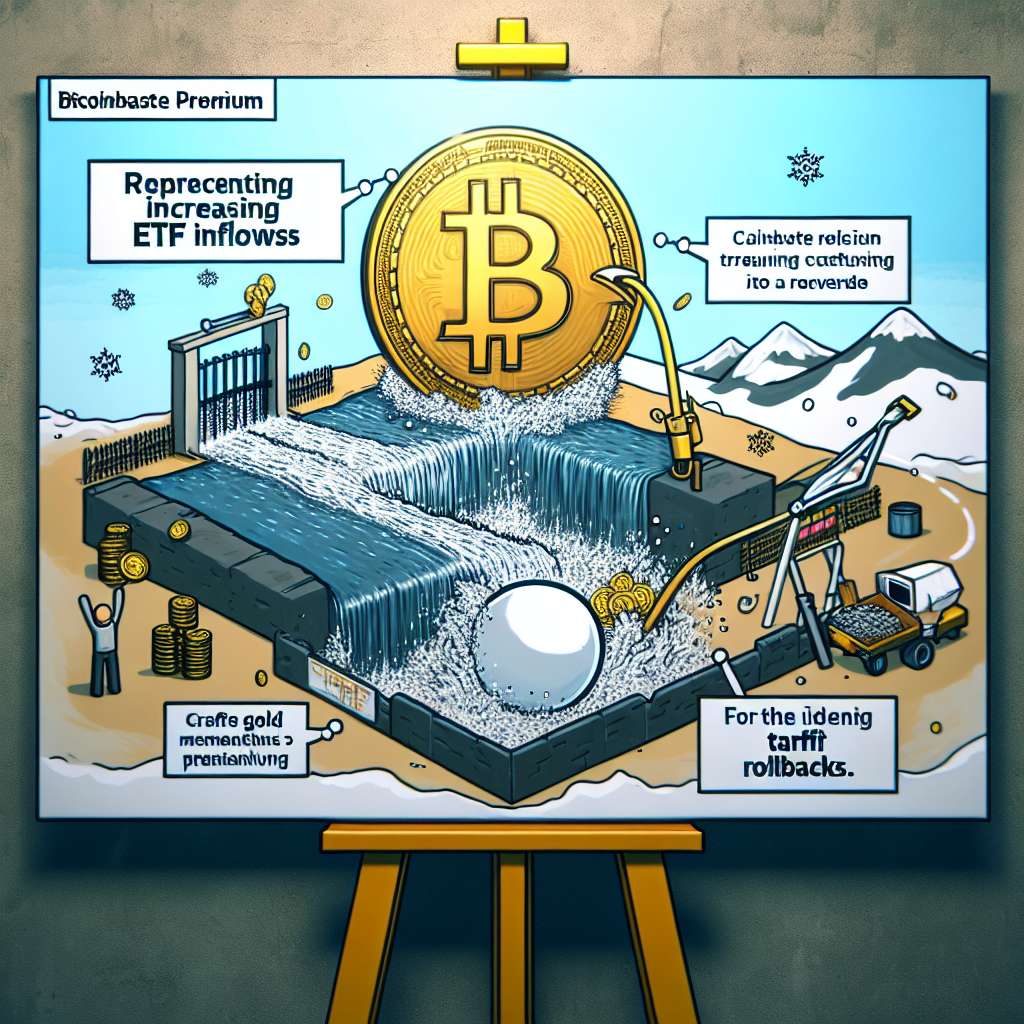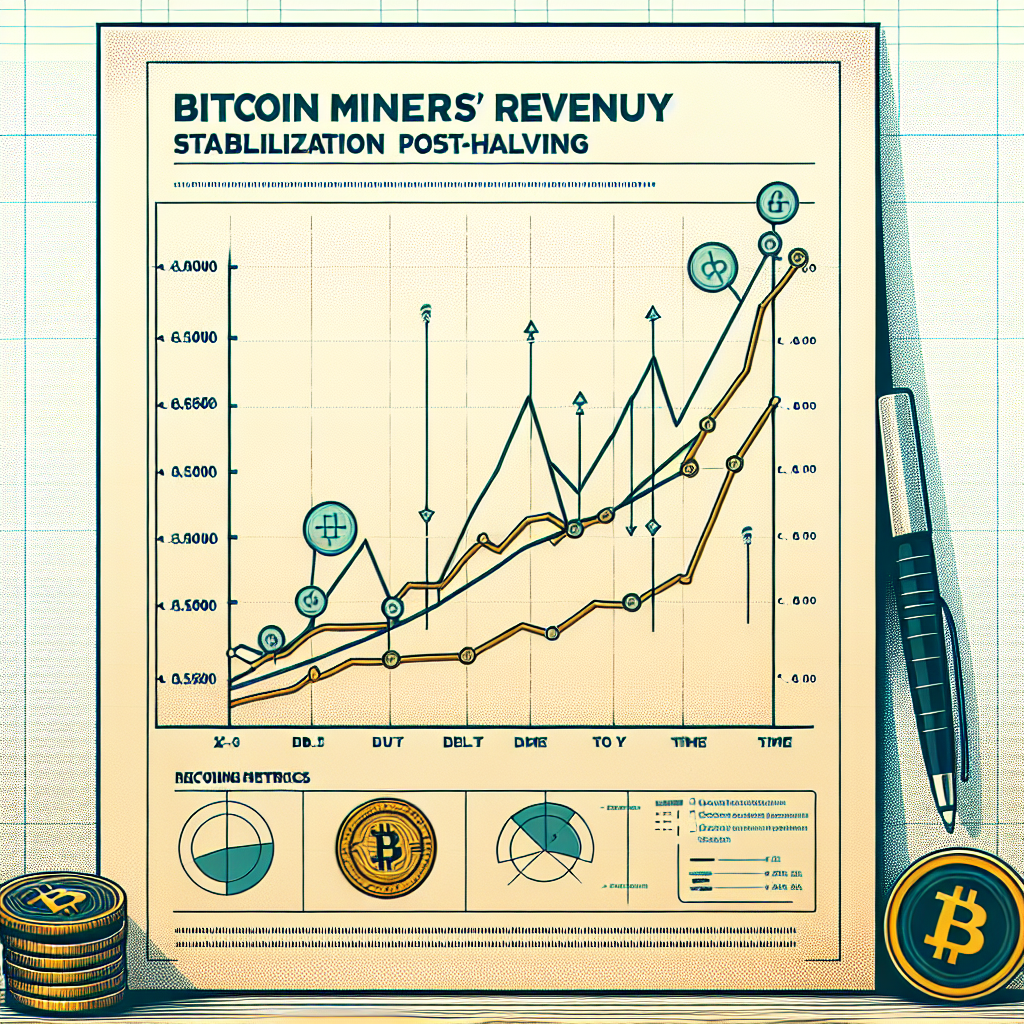
Navigating Crypto Volatility Amid a Potential US Recession in 2025
As we approach 2025, the cryptocurrency market faces significant uncertainty, particularly due to the looming possibility of a recession in the United States. Historically, economic downturns have had profound impacts on financial markets, and cryptocurrencies, despite their decentralized nature, are not immune to these effects. Investors and market participants must therefore remain vigilant and informed, carefully navigating the volatility that could arise from broader economic instability.
One of the primary concerns surrounding a potential US recession is the heightened volatility it could introduce into the crypto market. Cryptocurrencies, already known for their price fluctuations, may experience intensified swings as investors react to economic uncertainty. During periods of recession, investors typically seek safer assets, such as government bonds or gold, to protect their capital. Consequently, riskier assets like cryptocurrencies could face significant sell-offs, leading to sharp declines in prices. This scenario was evident during previous economic downturns, where speculative assets experienced rapid depreciation as investors fled to safer havens.
However, it is important to recognize that cryptocurrencies have evolved considerably since their inception, and their role within the broader financial ecosystem has expanded significantly. Institutional adoption has increased, with major financial institutions and corporations integrating cryptocurrencies into their investment portfolios and operational frameworks. This growing institutional presence could potentially mitigate some of the volatility traditionally associated with crypto markets during economic downturns. Institutional investors often adopt longer-term investment horizons and may be less inclined to engage in panic selling, thereby providing a stabilizing influence during periods of heightened uncertainty.
Moreover, the emergence of decentralized finance (DeFi) platforms and stablecoins has introduced new dynamics into the crypto market, potentially offering investors alternative avenues for risk management during a recession. Stablecoins, pegged to traditional fiat currencies such as the US dollar, provide investors with a relatively stable store of value within the crypto ecosystem. During periods of economic instability, investors may increasingly turn to stablecoins as a means of preserving capital while maintaining exposure to digital assets. Additionally, DeFi platforms offer innovative financial products and services, such as lending, borrowing, and yield farming, which could enable investors to diversify their portfolios and hedge against market volatility.
Nevertheless, investors must remain cautious, as the crypto market’s interconnectedness with traditional financial markets has grown significantly. Increased institutional involvement and regulatory scrutiny mean that cryptocurrencies are now more susceptible to macroeconomic shocks and policy decisions. For instance, monetary policy adjustments by the Federal Reserve, such as interest rate hikes or quantitative tightening, could directly impact investor sentiment and liquidity within crypto markets. Furthermore, regulatory developments in response to economic instability could introduce additional uncertainty, potentially exacerbating market volatility.
To effectively navigate crypto volatility amid a potential US recession in 2025, investors should adopt prudent risk management strategies. Diversification across various asset classes, including traditional investments and cryptocurrencies, can help mitigate potential losses during periods of heightened volatility. Additionally, investors should closely monitor macroeconomic indicators and policy developments, remaining agile and prepared to adjust their investment strategies accordingly. By staying informed and proactive, market participants can better position themselves to weather the challenges posed by economic uncertainty and capitalize on opportunities that may arise within the evolving crypto landscape.
Circular Crypto Economy: Risks and Opportunities in the 2025 Market Landscape

As we approach 2025, the cryptocurrency market is poised to experience significant shifts, driven by the emergence of a circular crypto economy. This new economic model, characterized by the continuous circulation of digital assets within decentralized ecosystems, presents both substantial opportunities and notable risks for investors, businesses, and regulators alike.
One of the primary opportunities presented by the circular crypto economy is increased financial inclusivity. By leveraging decentralized finance (DeFi) platforms, individuals previously excluded from traditional banking systems can now access financial services such as lending, borrowing, and investing. This democratization of finance has the potential to stimulate economic growth, particularly in developing regions where traditional financial infrastructure remains limited. Furthermore, the circular crypto economy encourages innovation by fostering competition among decentralized applications (dApps), leading to improved efficiency, reduced transaction costs, and enhanced user experiences.
However, alongside these promising opportunities, the circular crypto economy also introduces significant risks that stakeholders must carefully consider. Foremost among these risks is the heightened volatility inherent in decentralized markets. Unlike traditional financial systems, decentralized crypto markets lack centralized oversight, making them susceptible to rapid fluctuations driven by speculative trading, market manipulation, and sudden shifts in investor sentiment. Consequently, investors participating in the circular crypto economy must remain vigilant and adopt robust risk management strategies to mitigate potential losses.
Another critical risk factor is regulatory uncertainty. As decentralized financial ecosystems expand, regulators worldwide face increasing pressure to establish clear guidelines governing their operation. In the absence of comprehensive regulatory frameworks, market participants may encounter legal ambiguities, compliance challenges, and potential enforcement actions. This uncertainty can deter institutional investors and established financial institutions from fully embracing the circular crypto economy, thereby limiting its growth potential. To address this challenge, stakeholders must proactively engage with regulators to develop balanced policies that protect investors while fostering innovation.
Moreover, the circular crypto economy’s reliance on smart contracts and blockchain technology introduces cybersecurity risks that cannot be overlooked. Smart contracts, while efficient and transparent, remain vulnerable to coding errors, exploits, and malicious attacks. High-profile incidents involving decentralized exchanges and DeFi protocols have already demonstrated the devastating financial consequences of such vulnerabilities. As the circular crypto economy expands, the frequency and severity of cyberattacks are likely to increase, underscoring the need for rigorous security audits, continuous monitoring, and robust cybersecurity practices.
Environmental sustainability also emerges as a critical consideration within the circular crypto economy. Although many blockchain networks are transitioning toward energy-efficient consensus mechanisms, concerns persist regarding the environmental impact of crypto mining and transaction validation processes. Investors and businesses must carefully evaluate the sustainability practices of blockchain projects to ensure alignment with global environmental goals and avoid reputational risks associated with unsustainable practices.
Despite these challenges, the circular crypto economy presents substantial opportunities for forward-thinking stakeholders willing to navigate its complexities. By embracing innovation, fostering collaboration with regulators, prioritizing cybersecurity, and committing to sustainability, market participants can position themselves advantageously within this evolving landscape. Ultimately, the successful integration of the circular crypto economy into the broader financial ecosystem will depend on the collective efforts of investors, businesses, regulators, and technologists to address risks proactively and capitalize on emerging opportunities.
How a US Recession Could Impact the Stability of the Crypto Market in 2025
The potential onset of a recession in the United States in 2025 poses significant implications for the stability of the cryptocurrency market, given the interconnected nature of global financial systems. Historically, recessions have triggered widespread uncertainty, prompting investors to reassess their risk tolerance and shift their portfolios toward safer assets. In such an environment, cryptocurrencies, often perceived as high-risk investments due to their volatility and speculative nature, could experience substantial price fluctuations and reduced investor confidence.
One primary factor influencing the crypto market during a recession is investor sentiment. As economic conditions deteriorate, investors typically become more risk-averse, seeking refuge in traditional safe-haven assets such as gold, government bonds, and cash. Cryptocurrencies, despite their growing popularity and adoption, have yet to establish themselves firmly as reliable safe-haven assets. Consequently, during periods of economic downturn, investors may withdraw capital from crypto markets, leading to decreased liquidity and heightened volatility. This shift in investor behavior could exacerbate price instability, further undermining market confidence and potentially triggering a downward spiral in cryptocurrency valuations.
Moreover, a recession in the United States would likely prompt central banks, particularly the Federal Reserve, to implement monetary policy adjustments aimed at stabilizing the economy. Such measures could include interest rate cuts, quantitative easing, or other forms of monetary stimulus. While these policies are designed to support economic recovery, they may inadvertently impact the crypto market. For instance, lower interest rates and increased liquidity could initially encourage speculative investments, temporarily boosting cryptocurrency prices. However, prolonged economic uncertainty and persistent recessionary pressures could eventually overshadow these short-term gains, leading to increased volatility and market instability.
Additionally, regulatory responses to economic downturns could significantly influence the crypto market’s stability. In times of recession, governments and regulatory bodies often intensify scrutiny of financial markets to prevent systemic risks and protect investors. Increased regulatory oversight could result in stricter compliance requirements, tighter controls on crypto exchanges, and enhanced transparency measures. While these actions aim to safeguard investors and maintain market integrity, they may also impose additional operational burdens on crypto businesses, potentially stifling innovation and limiting market growth. Consequently, heightened regulatory uncertainty during a recession could further dampen investor enthusiasm and contribute to market instability.
Furthermore, the interconnectedness between traditional financial markets and cryptocurrencies has grown substantially in recent years, with institutional investors increasingly incorporating digital assets into their portfolios. As a result, a recession-induced downturn in traditional markets could spill over into the crypto sector, amplifying volatility and exacerbating market instability. Institutional investors facing liquidity constraints or portfolio losses in traditional markets may be compelled to liquidate their crypto holdings to meet margin calls or rebalance their portfolios. Such forced selling could trigger sharp declines in cryptocurrency prices, further undermining market confidence and stability.
In conclusion, a potential US recession in 2025 presents significant risks to the stability of the cryptocurrency market. Investor sentiment shifts toward risk aversion, monetary policy adjustments by central banks, increased regulatory scrutiny, and the growing interconnectedness between traditional and crypto markets collectively contribute to heightened volatility and uncertainty. As the crypto market continues to mature and integrate with global financial systems, stakeholders must remain vigilant and proactive in managing these risks to ensure long-term market resilience and stability.
![Ultimate Guide to the [Mind of Pepe ($MIND)] Token Sale: How to Participate and Key Insights](https://autocryptonews.com/wp-content/uploads/2025/04/トークンセール用アイキャッチ画像.jpg)




